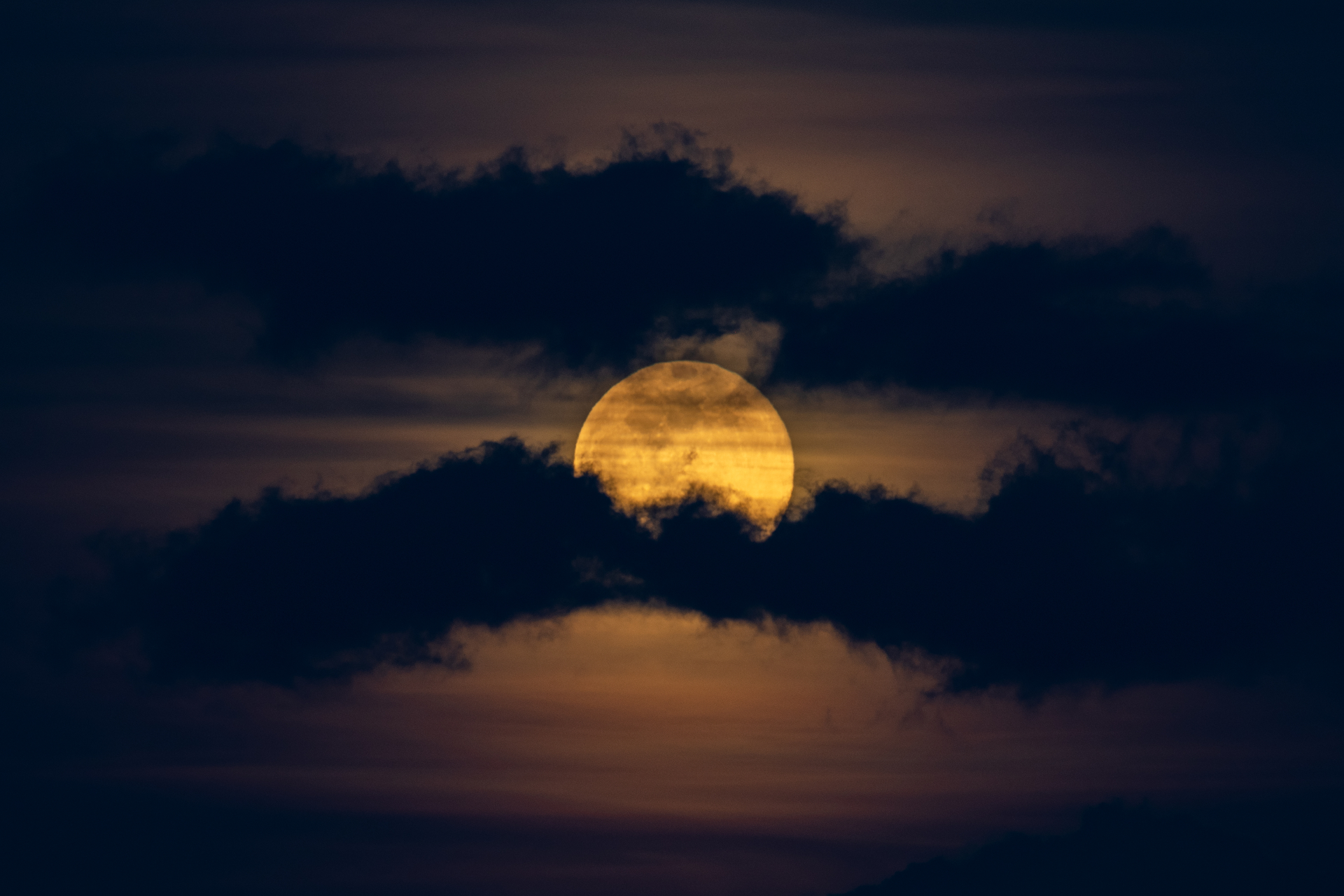Full Worm Moon, the last full moon of winter 2023, looks stunning in photos from around the world
The Worm Moon marks the last full moon of winter in the Northern Hemisphere.

March's full moon also known as the "Worm Moon" peaked on Mar. 7 and thrilled skywatchers worldwide.
A full moon occurs whenever the moon is on the opposite side of Earth from the sun. The next full moon will be on Thursday, April 6, at 12:34 a.m. EST (0534 GMT), and is known as the "Pink Moon."
From Italian fortresses to San Fransico's Golden Gate Bridge, we take a look at some of the best March full moon photographs captured around the world.
Related: Night sky, March 2023: What you can see tonight [maps]

Looking for a telescope to see the features of the full moon up close? We recommend the Celestron Astro Fi 102 as the top pick in our best beginner's telescope guide. Don't forget a moon filter!
The name "Worm Moon" is thought to relate to the emergence of earthworms from the thawing soils.
March's full moon has several other alternative names, including the Full Crow Moon, the Full Crust Moon and the Full Sap Moon.
The names for many of the full moons throughout the year are related to seasonal happenings in in the months in which they occur, such December's Cold Moon named for winter's low temperatures. March's full moon has what is perhaps one of the more unusual names from the catalog of full moon titles.
Breaking space news, the latest updates on rocket launches, skywatching events and more!
Fancy taking a more in-depth moonlit tour of our rocky companion? Our ultimate guide to observing the moon will help you plan your next skywatching venture, whether it be exploring the lunar seas, the moon's mountainous terrain, or the many craters that blanket its landscape. You can also see where astronauts, rovers and landers have ventured with our Apollo landing sites observing guide.
If you're looking for a telescope or binoculars to observe the next full moon, our guides for the best binoculars deals and the best telescope deals now can help. Our best cameras for astrophotography and best lenses for astrophotography can also help you prepare to capture the next skywatching sight on your own.
Skywatchers also turned to Twitter to share some of their spectacular shots of the Worm Moon.
Moonrise on a chilly Portobello evening#FullMoon #WormMoon #Portobello #Edinburgh pic.twitter.com/Hd0xRKTszrMarch 8, 2023
The #WormMoon rising behind the East Pier Lighthouse, Dún Laoghaire. Definitely one of my favourites from yesterday.🧡#VMWeather #RTEWeather #VisitDublin #LoveDublin pic.twitter.com/VnJE46HXpaMarch 8, 2023
This morning's Worm Moon setting over the Whitelees wind farm as the sun begins to rise. pic.twitter.com/eUGR5M4p0hMarch 8, 2023
Full worm moon 2023 rising over Lord Collingwood monument-Tynemouth (seagull wanted to be in on it too 👀🤣)#WormMoon #wormmoon2023 #fullmoon #StormHour #bbcneandcumbria @StormHour @StormHourMedia @itvtynetees @Ross_Hutchinson @BBCNEandCumbria pic.twitter.com/VzeIWPJ9yUMarch 8, 2023
Editor's Note: If you snap a photo of the Worm Moon and would like to share it with Space.com's readers, send your photo(s), comments, and your name and location to spacephotos@space.com.
Follow us on Twitter @Spacedotcom and Facebook.

Daisy Dobrijevic joined Space.com in February 2022 having previously worked for our sister publication All About Space magazine as a staff writer. Before joining us, Daisy completed an editorial internship with the BBC Sky at Night Magazine and worked at the National Space Centre in Leicester, U.K., where she enjoyed communicating space science to the public. In 2021, Daisy completed a PhD in plant physiology and also holds a Master's in Environmental Science, she is currently based in Nottingham, U.K. Daisy is passionate about all things space, with a penchant for solar activity and space weather. She has a strong interest in astrotourism and loves nothing more than a good northern lights chase!




